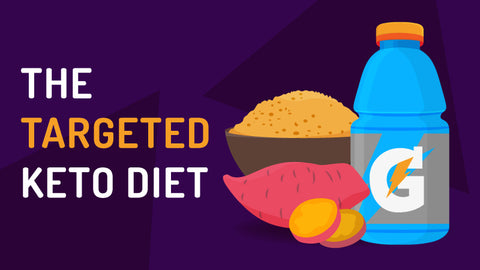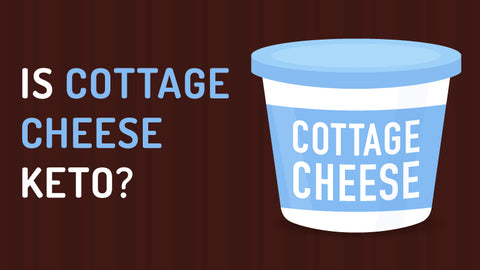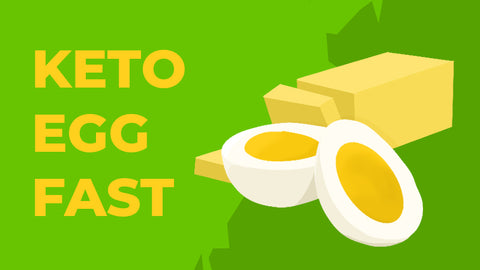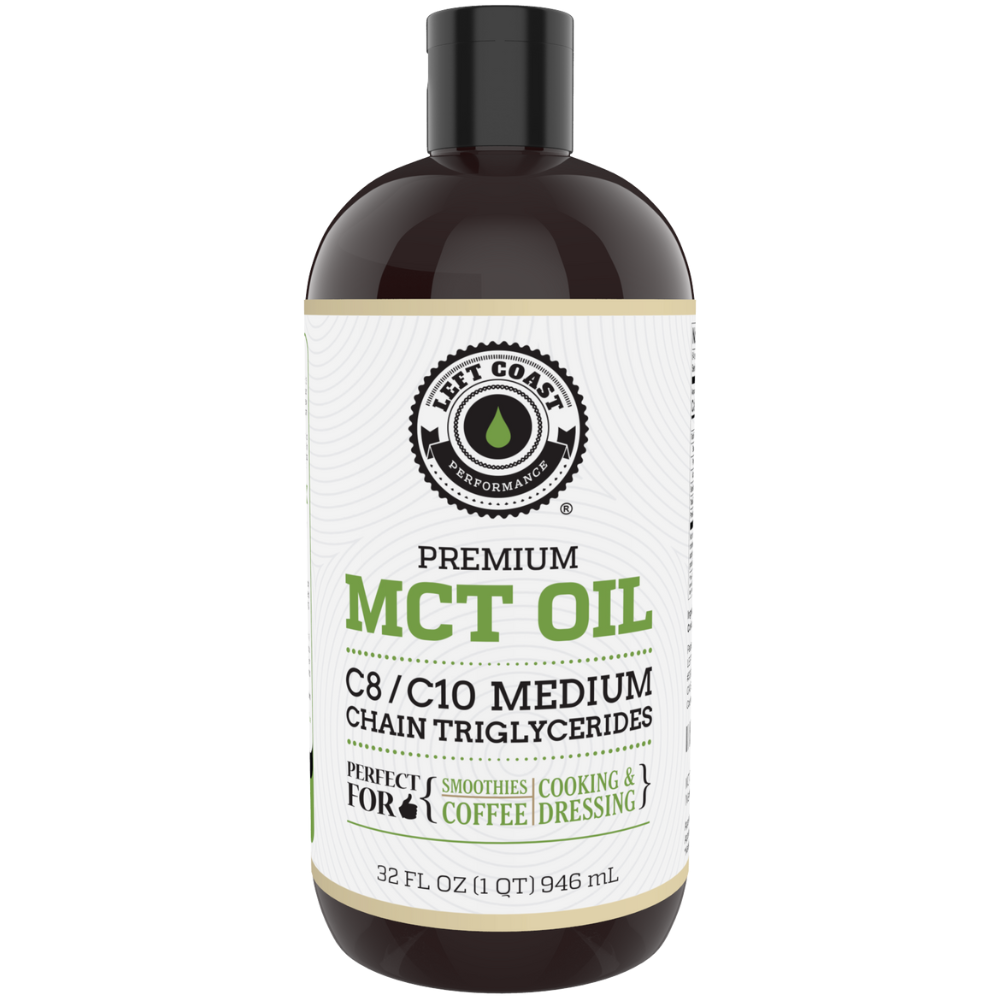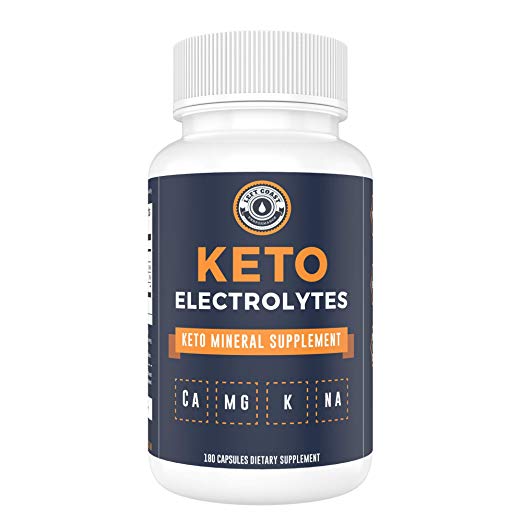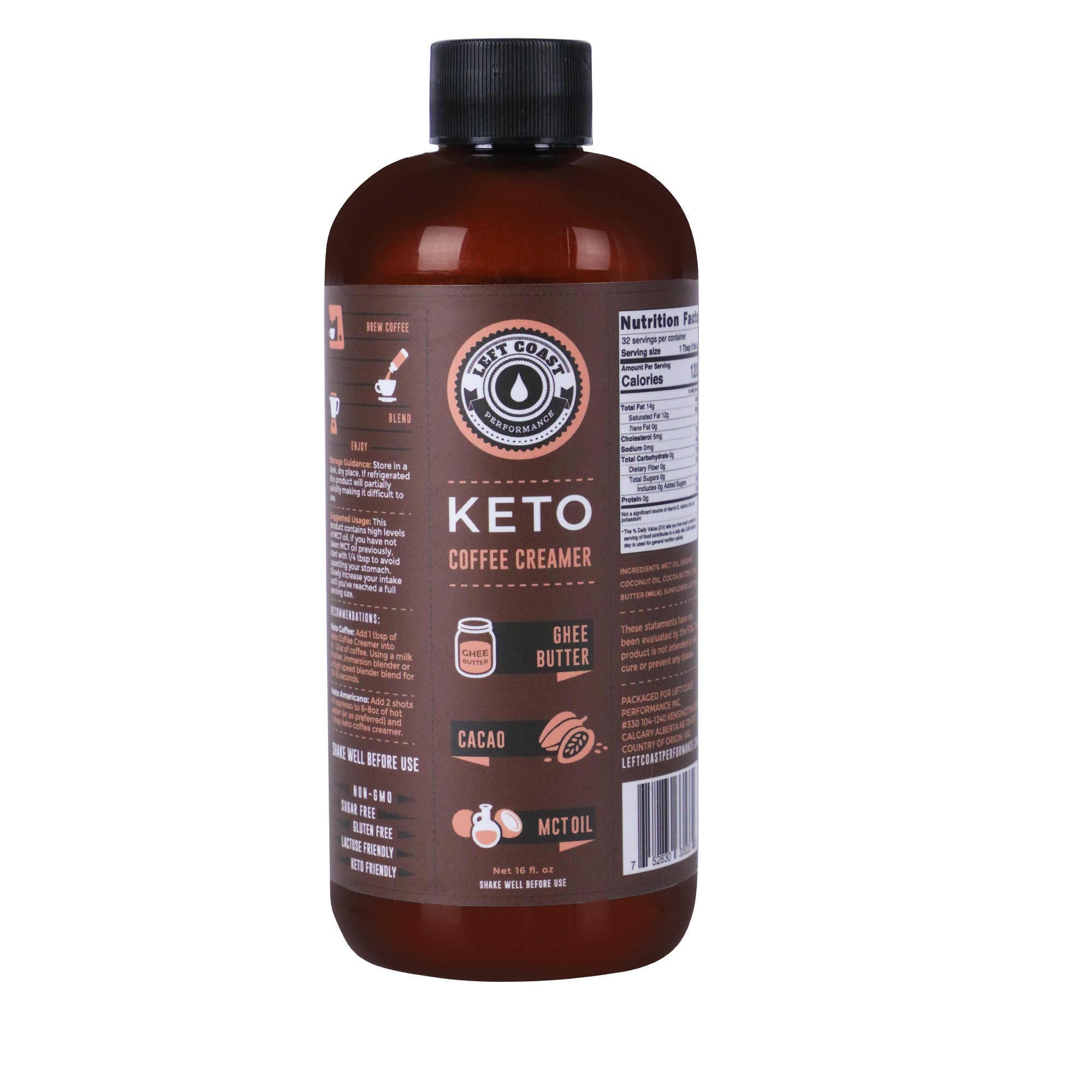Cyclical Ketogenic Diet (CKD)
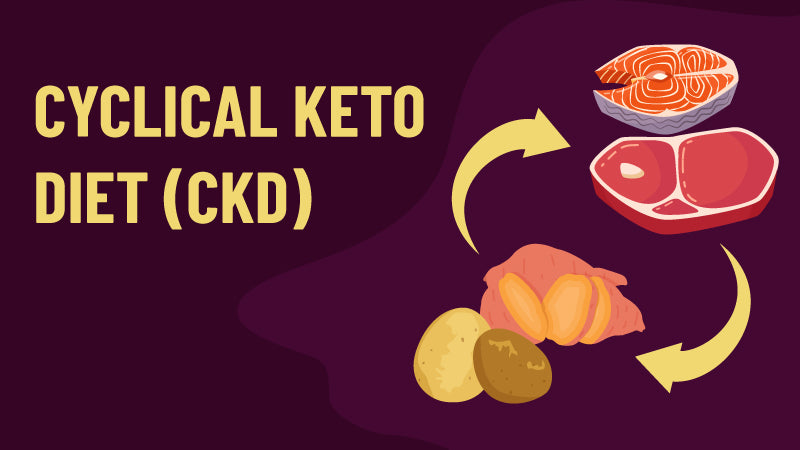
on October 27, 2019
One of the primary criticisms of the ketogenic (keto) diet is that it's extremely strict and difficult to follow long-term.
There's also some concern that athletes and those looking to increase physical performance won’t be able to reach their goals with reduced carb intake. The cyclical keto diet (CKD) is a modified method of eating keto while allowing for some flexibility and maximizing athletic performance.
The CKD is not for everyone. In this article, we’ll go over who this diet is best suited for and some recommendations on how you can safely integrate the cyclical ketogenic diet into your lifestyle.
What Is The Cyclical Ketogenic Diet?
The standard keto diet is a high fat, low carb, moderate protein diet. It usually involves eating between 5 - 10% of your calories from carbs (20 - 50 grams a day) with 60% or more of the remaining calories from fat.
The goal of restricting carbohydrates is to reach a metabolic state called ketosis, where the body begins to burn fat instead of sugar for its fuel source.
The CKD involves rotating between a strict low carb keto diet and a higher carb diet 1 - 2 days a week. It’s a more flexible approach to a keto diet.
Although the flexibility seems appealing, the cyclic keto diet isn’t for everyone. It’s not ideal for those using the keto diet to manage health conditions, regulate blood sugar levels, or weight loss. If those are your goals, increasing carbs will slow your progress.
Those looking to improve exercise or sports performance may find the CKD appealing as it offers flexibility while still benefiting from a low carb lifestyle.
One thing to note about the cyclic keto diet is that there is no research behind this dieting method.
The cyclic keto diet was created because many athletes perform better with increased carbohydrate intake, but they still wanted the many benefits that keto has to offer. With this method, athletes can get the best of both worlds.
The Difference Between Cyclical Keto Diet vs. Standard Keto Diet
The main difference between CKD and the standard ketogenic diet is the number of carbs you’re consuming.
On a standard keto diet, you would never increase your carb intake beyond 20 - 50 grams a day.
On a CKD, you eat keto 5 - 6 days a week, then increase your carbs 1 - 2 days a week. The higher carb days are your refeeding days. The goal is to replenish depleted glycogen (glucose) stores to increase energy and physical performance. When you carb-up, you switch your fuel source from fats to glucose.
During your refeeding days, you’ll be bumped out of ketosis. If you’ve been on keto for a while, you should be able to get back to ketosis within a couple of days of going back to low carb eating. Your body will come used to switching from these two fuel sources efficiently with careful meal planning, fasting, and exercise.
The Difference Between Carb Cycling and Cyclical Keto Diet
CKD is not the same as carb cycling, although there are some similarities. With “classic” carb cycling you alternate high and low carb days. This means you end up eating a high carb diet 3 - 4 days a week and a low carb diet 3 - 4 days a week.
With carb cycling, the exact number of high and low carb days can vary. Some stricter carb cycle diets may only include 1 - 2 high carb days, similar to cyclic keto.
The main difference between the two diets is that the low carb days on the carb cycle diet may not be low enough to induce ketosis.
A carb cycle diet is not considered a ketogenic diet because cycling is more liberal with the number of high carb days allowed, compared to CKD.
How Do I Do a Cyclical Keto Diet?
There are no agreed-upon rules for exactly how to do a cyclic keto diet. This diet requires some experimentation to find the best method that helps you achieve your fitness goals.
One way to get started is to eat a strict keto diet for six days. You first need to get into ketosis to start the cycle.
If you need a refresher or some new ideas for your keto diet grocery list, we’ve put together a quick no-brainer guide. The best way to start your keto diet is by meal prepping and staying on top of your food options to avoid falling into cravings.
Aim to keep your carb intake between 20 - 50 grams a day and eat plenty of healthy fats. On the 7th day, increase your carb intake and restrict your fat intake. Keep protein the same throughout.
What Do The Macros look Like on A Cyclical Keto Diet?
Whenever you start on a new diet, it’s important to understand your goals and track your progress. The first step of an effective ketogenic diet plan is mapping out your macros.
We’ve put together an example of what your diet should look like on a cyclical keto diet. Based on this outline, you’ll be in the ketosis for 5 - 6 days and your higher carb phase or refeeding days for 1 - 2 days.
Macronutrient Breakdown on the Keto Phase
During the keto phase, the macros breakdown will be:
- 5 - 10% carbohydrates
- 70 - 80% fat
- 20 - 25% protein
Acceptable foods in the keto phase are:
- Meat, chicken, fish
- Eggs
- Full fat dairy without added sugar
- Nuts and seeds
- Nut butters
- Avocado
- Coconut, olive, or avocado oil
- Low carb vegetables
- Berries, in small quantities
Macronutrients Breakdown on the Carb Phase
On the refeeding days, you will flip flop the carb and fat macros. The goal is to fill up your glycogen stores to boost energy for exercise and to increase insulin levels, promoting muscle deposition.
The macros breakdown for the high carb days are:
- 60 - 70% carbohydrates
- 5 - 10% fat
- 20 - 25% protein
Complex vs. Simple Carbohydrates
Refeeding days are not equal to cheat days. You shouldn’t binge on donuts and candy when you carb-up.
Doing this will make you feel awful and won’t improve your performance. You want to focus on choosing nutrient-dense carbs to fuel your body.
Stick with complex carbs during your refeed, as opposed to simple carbs. Complex carbs are whole food choices that are loaded with fiber but low in sugar. Simple carbs are highly processed with little fiber and added sugar.
|
Complex Carbohydrates |
Simple Carbohydrates |
|
|
What to Avoid
As we mentioned, you want to avoid simple and refined carbohydrates during the refeeding phase.
Your off-keto days are not cheat days. Eating a ton of processed, high sugar foods will make it harder to get back on track on your low carb days and may increase your appetite.
Sticking to high-quality, unprocessed carb choices will give you the best results while following a cyclic keto diet.
How Do I Get Back Into Ketosis?
Getting back into ketosis might be a big concern because the first few weeks on a low carb diet can be tough. There are a few ways to jump back into ketosis quickly, even after eating high carb for a day or two.
Another common hurdle on the ketogenic diet is the infamous keto-flu. To stave off keto-flu symptoms — headache, fatigue, nausea, and constipation — make sure you’re staying hydrated, getting the daily recommended vitamins and minerals, and eating enough food.
Deplete Glycogen Stores
During your refeeding period, your body fills up its glucose stores. Glucose is stored in the liver and muscles in the form of glycogen. Until you’ve used up the stored glycogen, your body will not transition into ketosis.
Here are a few methods to effectively burn up glycogen and get you back into ketosis.
Intermittent Fasting
The easiest way to push your body back into ketosis is to end your high carb period with a fast. The fast can be as short as 16 hours or up to 24 hours. Fasting will burn up the stored glycogen much faster, so you can jump back into ketosis — using fat as your fuel source — as quickly as possible.
Once you're in ketosis, there's no one way to fast that's recommended above other methods. Intermittent fasting is generally beneficial to keto dieters.
High-Intensity Exercise
High-intensity workouts can also help use up stored glycogen and get you back into ketosis quickly. High-intensity interval training (HIIT) or intense circuit workouts are the best for burning up glycogen and forcing the body to start using ketones to get through the workout. Exercise will also help you build muscle, one of the main reasons why people try CKD.
Supplement MCT Oil
In addition to fasting and exercise, supplementing with medium-chain triglycerides (MCTs) can help boost ketone levels in the body. These fats are readily used for energy and will help you transition faster from burning sugar to burning fat. They can also help ward off some of the keto-flu symptoms.
Supplement Exogenous Ketones
Exogenous ketones are products used as a keto hack designed to get you into ketosis faster. Rather than relying on endogenous ketones that your body produces itself, exogenous ketones come from outside the body. They can be used to ease the symptoms of the keto flu.
What Are the Benefits of a Cyclical Keto Diet
The cyclical keto diet has many potential benefits, particularly for those looking to boost athletic performance and gain muscle while still enjoying the benefits of a low carb lifestyle.
Muscle Gain
As we mentioned, there is little research on cyclic keto, specifically. But, the effects of the keto diet on muscle mass are better understood.
Keto does help increase muscle mass, according to research. It’s theorized that cyclic keto may be even more beneficial because of the impact it may have on muscle-building hormones, such as insulin.
Insulin’s Impact on Muscle Glycogen
There are many hormones involved in muscle building, called anabolic hormones. One of these hormones is insulin, which acts as a signal to the body to store nutrients after a meal. It helps the body build muscle by increasing glucose and amino acid uptake into the cells while decreasing protein breakdown.
Keto naturally decreases insulin. In theory, you're increasing insulin levels on refeeding days, allowing you to tap into the anabolic or muscle-building effects of insulin. This could, in turn, promote muscle growth.
Insulin’s Impact on Growth Hormone
Growth hormone (GH) is critical for muscle building and fat loss. The problem is that insulin stunts the release of growth hormone. To maximize your growth hormone production, you need to keep your insulin levels low.
On an effective CKD, you're strategically spiking your insulin to get the body to store amino acids and other nutrients required for muscle building.
When you revert into ketosis, your insulin levels drop, which boosts GH for muscle deposition. The theory is that this hormone cycle will optimize muscle growth and promote fat loss.
Carbohydrates Impact on Protein Synthesis
It was previously believed that protein was the only thing that mattered for muscle building. But, it’s now understood that both protein and carbs play a role in building new muscle. Giving your body more carbs from time to time may be what is needed for optimal body composition and muscle growth.
A More Nutrient-Rich Diet
One of the biggest benefits of cyclic keto is that it allows you to eat a greater variety of nutrients. Although you can meet your daily vitamin and mineral needs on a well-balanced keto diet — especially if you eat berries and vegetables — there are a few nutrients that you might be lacking.
Adding in some high carb foods once or twice a week adds in nutritional variety, helping you have a more balanced diet.
Increased Fiber
The focus on fats and protein while eating keto makes it challenging to get enough fiber in your diet. Meat, dairy, and fat do not contain fiber. Fiber is the structural carbohydrate found in plants only.
Foods that are added on the refeeding days, such as brown rice or quinoa, are high in fiber. This may help improve digestion and keep gut bacteria healthy.
Vitamins and Minerals
Avoiding an entire food group — like on the keto diet — can lead to a decreased intake of certain vitamins and minerals. Although a well-balanced keto diet that includes plenty of green veggies can be nutrient-rich, there are a few nutrients of concern.
Vitamin A, in the form of beta-carotene, is only found in plant foods. Adding in sweet potatoes or butternut squash can help you meet your vitamin A needs.
Other nutrients of concern on a keto diet are vitamin C, vitamin K, manganese, magnesium, and potassium. The main sources of these nutrients are vegetables and grains. Eating foods high in these vitamins and minerals on your refeed days will help you meet your nutrient needs more easily.
A Much More Manageable Diet
Eating a cyclical keto diet can help you stick with your diet longer. Adopting a keto lifestyle feel isolating in social situations, making it a difficult diet to sustain long-term.
If once a week you can eat “normally,” this means you don’t have to say no to invitations to go out to dinner or worry about what to eat at a party. Of course, you still don’t want to binge out on pasta or pizza if you do go out, but a refeed day can allow for a bit more flexibility.
How Carbohydrates Impact Your Thyroid
A 2017 study found that the ketogenic diet may negatively impact thyroid function.
The theory is that we need less thyroid hormone when we don’t eat as many carbs, which makes the body produce less.
That being said, bumping your carb intake like on a CKD may help normalize thyroid hormone levels.
What Are the Negative Aspects of a Cyclical Keto Diet
Before trying a cyclic keto diet, it’s important to determine if the diet is right for you.
Cyclic keto is an advanced dietary practice. It’s not for those just starting with keto. It’s also not for people who want to lose weight or manage health conditions.
The cyclical keto diet is ideal for physically active athletes who are already keto-adapted and want to improve athletic performance. There are also a few other downsides to cyclic keto.
Limited research
There is little research on the benefits of cyclic keto. One 2017 animal study found that cyclic keto increased longevity more than standard keto, but we can’t translate those findings to humans.
If you want to try cyclic keto, pay attention to how you feel and if you are seeing the progress you’re looking for. This can help you determine if it is the right method for you and allow you to adjust as needed.
Overeating on Carb Phase Days
During your refeeding days, it can be tempting to overeat — I mean, you have to eat carbs right? Sometimes being allowed foods you aren’t eating on other days can make you go overboard.
If you’re finding that on your refeeding days you’re diving headfirst into a box of donuts or overeating the rice or pasta you are allowed, CKD may not be right for you.
You're restricted to increasing your carbs for only 1 or 2 days. If you are struggling to get back on track after those few days, you may need to just stick with standard keto.
Spend Far Less Time in Ketosis
Being in ketosis has many benefits from regulating blood sugar levels to weight loss. The less time you spend in ketosis, the less you will reap the benefits. Although a keto-adapted person can jump back in relatively quickly, especially with the methods described above,
Weight Gain Due to Increased Water Weight
If you are practicing cyclic keto, you should expect a bit of weight gain after those high carb days. The body stores 3 grams of water with each gram of glycogen. This means you may experience a 2 - 5 pound weight fluctuation after your refeeding days, which should disappear after a couple of days back on keto.
Is Cyclic Keto Right for You?
In theory, cyclic keto takes the best of both worlds of keto and high carb eating.
It uses carbs for hormonal and muscle-building benefits while optimizing growth hormone with ketosis. It may also seem appealing to be able to occasionally bump up your carb intake.
But, cyclic keto is probably not the ideal diet for the average person. It would only be recommended for athletes who have experienced decreases in performance while eating keto. It might be one method to improve performance and body composition, although there is no research to support these claims.
For most people who just want to lose weight and build a bit of muscle, there is plenty of research behind the benefits of a standard keto diet to meet those goals.



